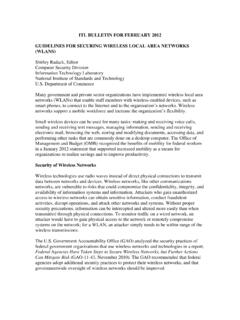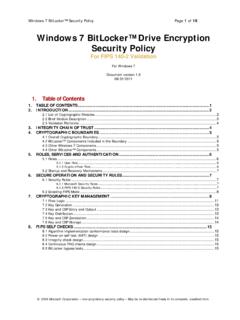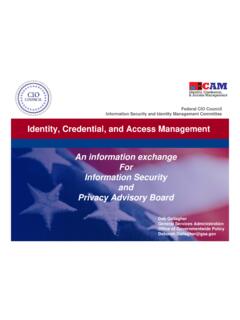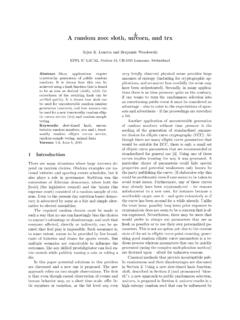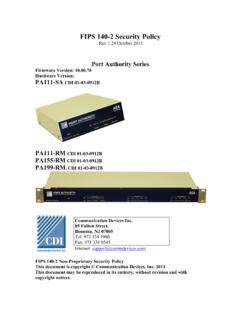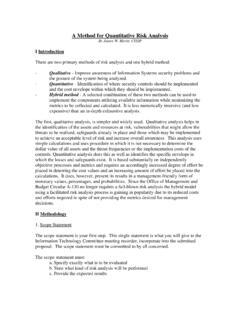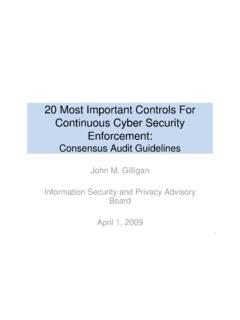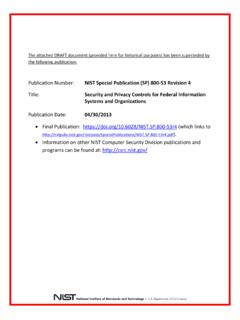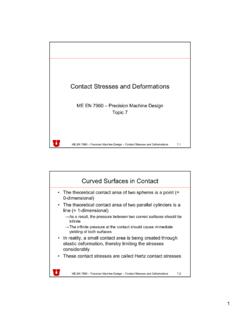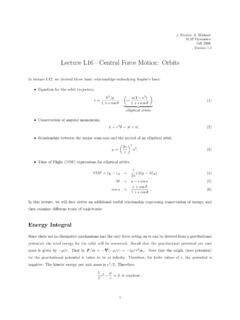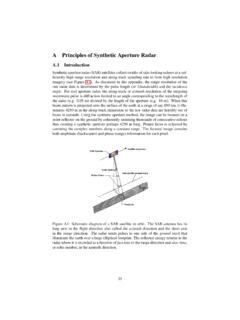Transcription of Efficient and Secure ECC Implementation of Curve P-256 - NIST
1 1 Efficient and Secure Elliptic Curve Cryptography Implementation of Curve P-256 Mehmet Adalier1 Antara Teknik, LLC Abstract Public key cryptography has become the de facto standard for Secure communications over the Internet and other communications media such as cellular and Wi-Fi.
2 Elliptic curves offer both better performance and higher security than first generation public key techniques and are gaining acceptance as the foundation for future Internet security such as the security-enhanced Border Gateway Protocol (BGPSEC). In this paper, we present a performance optimized and side-channel-attack resistant Implementation of the NIST Curve P- 256 which provides 128-bits of security. We also discuss operation time vs. storage trade-offs for various approaches.
3 Introduction The reliable functioning of critical infrastructure, such as the Internet, is imperative to the national and economic security of United States [1] especially as the frequency and complexity of cyber-security threats are increasing significantly. The currently deployed Border Gateway Protocol (BGP), which was last updated in 2006 [2,3], does not include provisions for security features and is vulnerable to malicious attacks targeting the control plane.
4 These attacks can be perpetuated in a number of ways [4 ,5,6] and could cause significant failures and instability. Moreover, perpetuators can deny service, re-route traffic to malicious hosts, and expose network topologies. There have been significant efforts over the years to add robustness to BGP and to provide Best Common Practice (BCP) guidance for the same [7,8,9]. The Internet Engineering Taskforce (IETF) is currently developing BGPSEC (BGP with Security) [10], an extension to BGP with the intention to provide path security for BGP route advertisements.
5 1 This material is based upon work supported by the National Institute of Standards and Technology (NIST) under cooperative agreement 70 NANB14H289. Any opinions, findings, conclusions or recommendations expressed in this publication are those of the author and do not necessarily reflect the views of extension is meant to provide resiliency against route hijacks and Autonomous System (AS) path modifications. Specifically, two mechanisms: i) route-origin validation [11]; and ii) path validation are being defined [10].
6 As described in RFC 6480 [12] the Resource Public Key Infrastructure (RPKI) provides the initial step used to validate BGP routing data. First, holders of AS number and IP address resources are issued RPKI Resource Certificates, which establish a binding between them and cryptographic keys for digital signature verification. Furthermore, a Route Origination Authorization (ROA), which is a digitally signed object, allows holders of IP address resources to authorize specific ASes to originate routes.
7 BGP speakers can use ROAs to ensure that the AS which originated the received route, was in fact authorized to originate that route. ECDSA P- 256, a prime Curve that has been used extensively in critical infrastructure projects, is being used as the elliptical Curve Digital Signature Algorithm for AS-path signing and verification in the BGPSEC protocol [10]. The performance efficiency of ECDSA P- 256 is imperative to meet strict Internet routing table convergence requirements [13].
8 Thus the viability of BGPSEC adoption is dependent on the availability of high performance implementations of ECDSA P- 256. In this paper we discuss key Implementation areas and optimization opportunities, and show that it is possible to implement ultra fast and Secure ECDSA for the Curve P- 256, delivering full 128-bits of security, on low-cost and low-power commercially available hardware. Furthermore, our work can be extended to optimize other prime curves such as Curve P- 521, which provides 256-bits of security.
9 ECDSA Overview elliptical Curve Cryptology has been extensively studied and documented [14,15]. This paper is focused on applied cryptography and Implementation aspects rather than mathematical proofs of underlying theorems. This section provides a brief overview of the fundamentals.
10 ECDSA Parameters For proper Implementation of ECDSA the use of a specific set of elliptic Curve domain parameters are required for digital signature generation and verification. These domain parameters may be used for extended time periods ( over multiple sessions).
